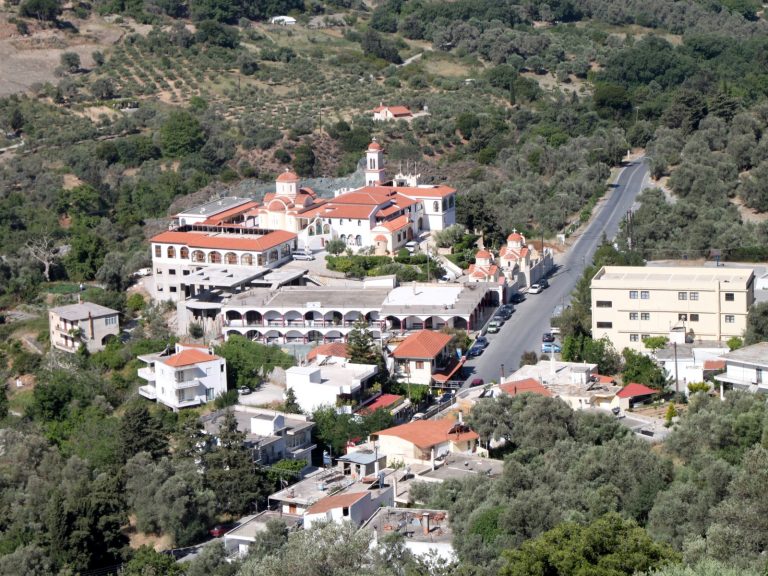
You are using the Free Edition of CreteAPP. For extensive information on Crete, GO PRIME with our comprehensive Greek Travel App featuring the full editions of Crete and 25more Greek islands & Athens.
Spili is located about 30km south of Rethymno, at an altitude of 430m, at the foot of Mount Vorizis, an offshoot of Kedros Mount. Its population is around 800 inhabitants, but this number increases during the summer months. The villagers are mainly farmers, ranchers and merchants, but in recent years most young people deal with tourism.
The village is a node for the south coasts and this makes its position particularly advantageous. Given the importance of its location, almost all basic services can be found in Spili, such as banks, post office, telecommunications, health center, police station and even the Church Conference Center. Therefore, Spili is an ideal destination for visitors and for Greeks, where they can combine their holiday without missing anything.
In the center of the village square with the two huge plane trees, is Kefalovrisi (i.e. prime spring) as it is called. This is a series of 25 fountains with the form of a lion head from the mouths of which 330 cubic meters of water flow every hour, rich in iron and having a constant temperature at 13 °C. Around Kefalovrisi you‘ll meet several taverns with genuine Cretan cuisine, coffee shops and folk art shops.
The lush vegetation of the village is caused by the gurgling river flowing south of the village. The river is full of trout and can be accessed through a path of great natural beauty.
One of the main attractions of the village are the numerous traditional water mills still surviving near the river. In particular one of them is still in operation, while the beautiful scenery is completed by the European path E4 “Spili – Gerakari” which runs next to the church the Holy Spirit and through the olive groves north of the village. Lastly, close to the village, starts one of the most beautiful canyons of Rethymnon, Kourtaliotiko Gorge, exiting at the famous palm grove of Preveli
History
It is said that Spili got its name (spili means cave) after the several caves in the area and especially the cave located in the northwestern part of the village, called Peristere. It is reported that in this cave was the miraculous icon of Virgin Mary, painted on a rock, which unfortunately does not survive today. The village is known by that name since the Venetian Era, when it was separated into two settlements, Panochori and Perachori.
It is sure that Spili settlements preexisted, because there are churches with Byzantine frescoes of the 14th century around the village (St Theodore, St George, Transfiguration, Virgin Mary). The religious importance is indicated by the high number of churches in the small town (21). The Church of Saints Peter and Paul, built in 1962, operates as the metropolitan church. It is worth visiting the church of St. Rafael and its adjacent buildings, which are also the home of the local Bishop.
The proud spirit of the villagers, the feeling of freedom they possessed, but also their devotion to manners, customs and traditions has been shown many times in the history of Spili.
On a hill south of the village, in 1790 Giakoumis Tsouderos beheaded two Turk janissaries who wanted to disturb locals and came uninvited at a wedding ceremony. In June 1821, with the start of the Greek Revolution, a battle with the Turks took place here, who were killed by Spilian rebels. Also the participation of villagers in the Cretan Revolution of 1866 was very important.
Spilians participated and gave their lives in all the wars of the Greek nation (the Balkan wars – Asia Minor – Albanian front). During the German Occupation, the participation of villagers in the local resistance was at its maximum. However, the village was not destroyed by the conquerors, because as earlier reports stated, the German officer was treated by locals, after falling of the airplane, without them knowing that.
Spili has given birth to some very important personalities of Crete, among which is the master of Cretan music Thanassis Skordalos, the lyre player George Kalogridis and the dancer Stamatis Papadakis.
Sorry, no records were found. Please adjust your search criteria and try again.
Sorry, unable to load the Maps API.
